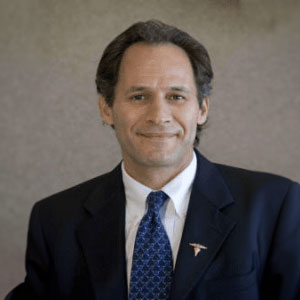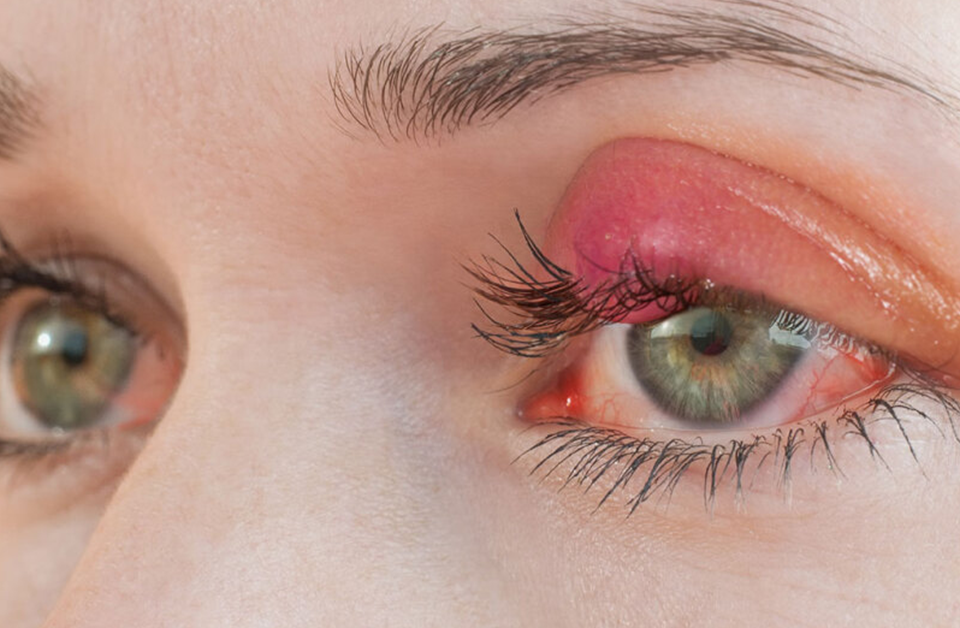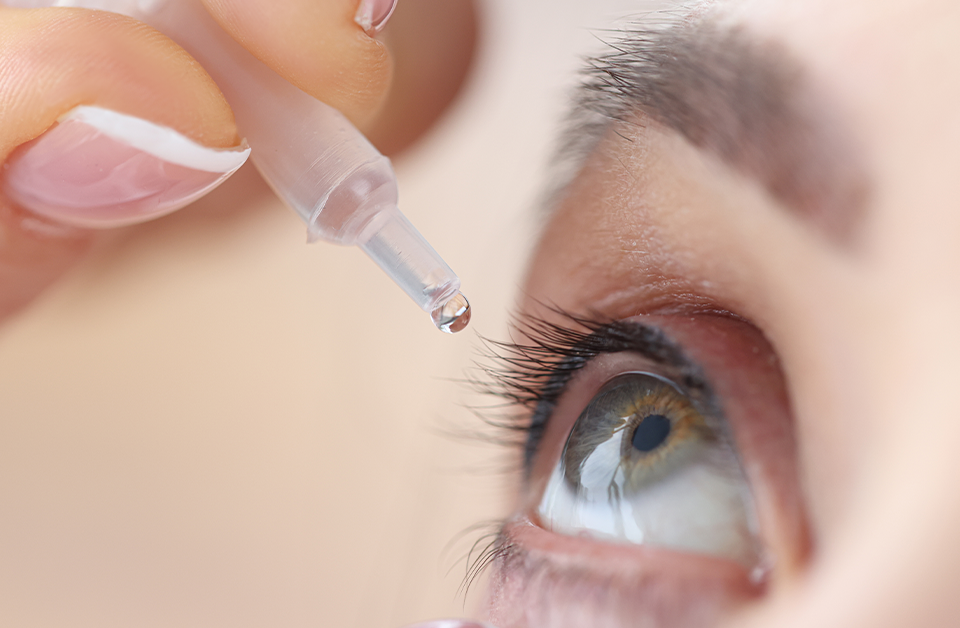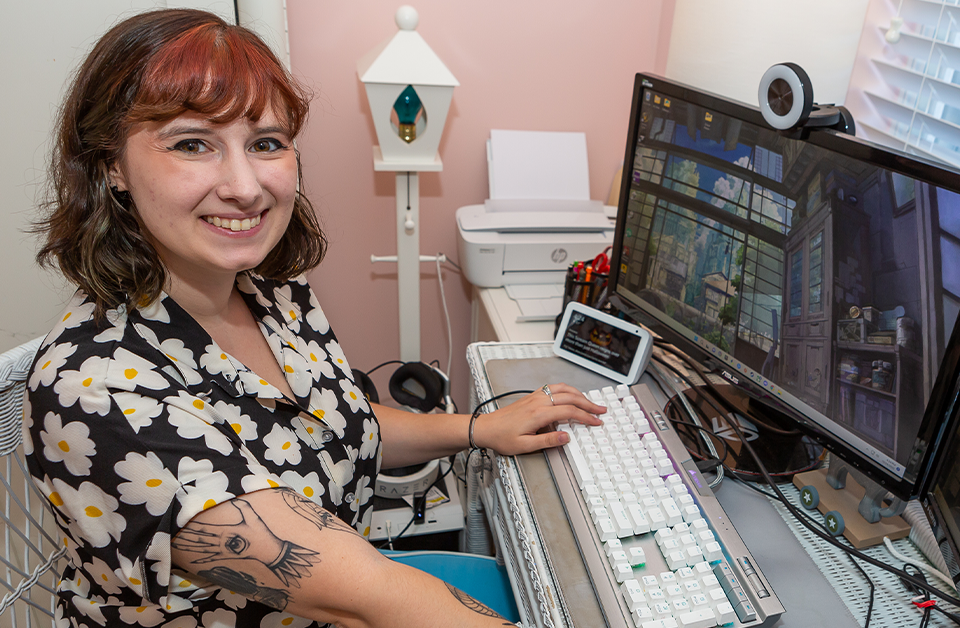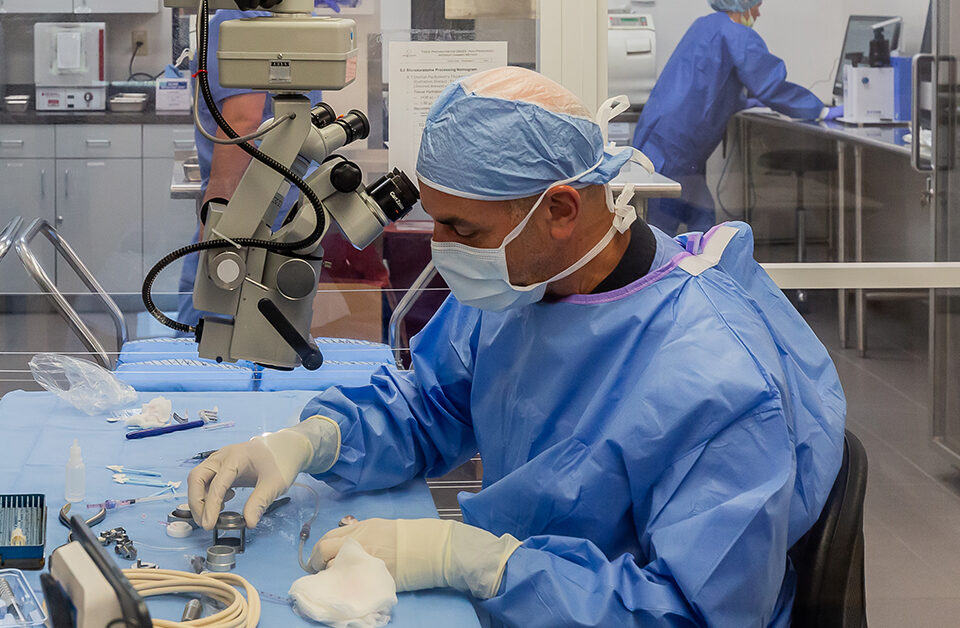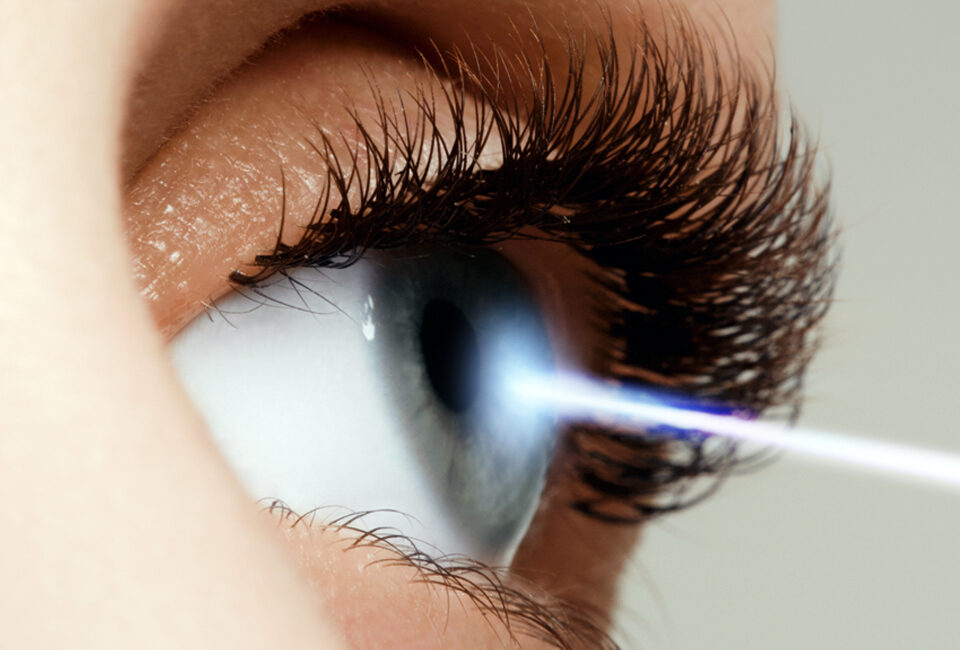Like the sports cars he tinkers with, Charles Boggess has a few parts that aren’t original. The 61-year-old Florida native and tractor-trailer driver was given a new kidney in 1998. Sixteen years later, he received two corneal transplants to correct a series of vision problems that began years earlier.
“I started using reading glasses when I was pretty young,” Charles relates. “And I’ve worn regular eyeglasses for nearsightedness since I was 30. Around 2014, my vision became really blurry. I kept getting new glasses prescriptions, but they didn’t clear up my vision. I eventually went to a new eye doctor, and he figured out I had Fuchs’ dystrophy.”
Fuchs’ (pronounced fewks) dystrophy is a condition that causes the cornea, the clear, protective outer layer of the eye, to swell and become cloudy. In a healthy eye, the cells of the cornea’s endothelial layer pump fluid away from the cornea to keep it clear. With Fuchs’ dystrophy, this layer changes and fails, and fluid builds up, causing hazy vision and eye discomfort.
“It was like living underwater, like the filters in my eyes quit working,” Charles describes. “Everything was very blurry. The doctor told me whatever glasses I got weren’t going to work until I got my Fuchs’ dystrophy cleared up. He referred me to Dr. Salinger.”
Clifford L. Salinger, MD, is a cornea specialist and founder of The Dry Eye Spa & V.I.P. Laser Eye Center in Palm Beach Gardens. He has expertise in treating Fuchs’ dystrophy using partial thickness corneal transplants. That’s what he used to address Charles’ diseased corneas.
“The partial thickness corneal transplant procedure we perform is called Descemet stripping automated endothelial keratoplasty, or DSAEK,” Dr. Salinger reports. “This is a newer, more advanced method of performing a corneal transplant that involves removing and replacing only the inner lining of the cornea.
“I noticed a difference right away.” – Charles
“Because it involves transplanting just the inner corneal lining, DSAEK is safer than traditional corneal transplants. There is less trauma to the cornea, so there are fewer risks associated with DSAEK. Healing is faster as well, and patients have fewer limitations to their lifestyle after the procedure.”
Dr. Salinger performed a DSAEK procedure on Charles’ right eye in September 2014 and the left eye three months later.
“After the transplant surgeries, I could see very well in the distance with my right eye, but I had quite a bit of astigmatism in my left eye and still couldn’t see in the distance,” Charles shares.
“I’m a truck driver, and distance vision is very important to me, so Dr. Salinger recommended another procedure to correct the astigmatism. Another reason I wanted both eyes corrected for distance was to keep from having to wear glasses all the time.”
LASEK (With an “E”)
“There’s a misconception that if people need glasses following surgery, whether it’s cataract removal or DSAEK, they are stuck wearing glasses forever,” Dr. Salinger notes. “That’s a myth. There are many things we can do, including laser vision correction procedures, that minimize or eliminate a person’s dependence on glasses.”
Generally, when people think about laser vision correction, LASIK® (laser-assisted in situ keratomileusis) comes to mind. LASIK corrects vision by reshaping the cornea, which changes its focusing power on the retina, the light-sensitive nerve tissue lining the back of the eye.
During LASIK, surgeons use a laser to create a thin flap on the corneal surface. Then, the laser removes some of the tissue underneath the flap to reshape the cornea.
But that’s not the procedure Dr. Salinger selected for Charles. Instead, he chose another laser surgery with a slower healing process that he determined would be better and safer for Charles’ left eye.
“Mr. Boggess was looking to become less dependent on glasses,” Dr. Salinger asserts. “Since he had Fuchs’ dystrophy and underwent previous cornea surgery with the DSAEK, we concluded that a procedure without a flap called LASEK was the better option for him.”
With LASEK (laser epithelial keratomileusis), also known as PRK (photorefractive keratectomy), Dr. Salinger first removes the cornea’s surface skin layer, the epithelium, before applying the laser to the corneal surface.
“There’s no cutting, no flap,” Dr. Salinger explains. “We place a bandage contact lens on the eye for better comfort and to assist in healing.
“The cornea’s skin layer then needs time to heal, about a week. The bandage contact lens is then removed and vision continues to improve over weeks to months. For Mr. Boggess, LASEK was safer in the short term and the long term.
“It was essential for Mr. Boggess’ professional life that we perform the laser vision correction to balance his two eyes for distance. If we didn’t, he would feel unsafe on the road, and that feeling would be worse at night and in bad weather. That’s definitely not a good scenario for a truck driver.”
Charles noticed an improvement in his vision soon after the LASEK was completed in August 2020.
“I noticed a difference right away, and after a few weeks, I could see well enough to read road signs,” Charles states. “That’s the main thing I needed. My vision just got better every day.”
Missing Tears
During his 35-year career in law enforcement, Michael Driscoll helped put many dangerous criminals in prison, so he prefers to keep a low profile.
“I’m originally from the Boston area, but I’ve lived in Florida for 33 years,” Michael shares. “I worked for and retired from the Florida Department of Law Enforcement, but I’m a private investigator now so I’m not completely retired.”
As an investigator, Michael relies on his vision to identify individuals and activities of interest in his cases. For more than a decade, Michael’s vision was compromised by symptoms of dry eye disease, a condition associated with a lack of quality tears to lubricate and nourish the eyes.
“I’ve suffered with dry eye for at least 12 years, maybe 15,” Michael reveals. “It became progressively worse over the past few years. I experienced symptoms such as dryness, burning and intense tearing. Early on, I didn’t tear up much, but my eyes teared up excessively over the past couple of years.
“My dry eye never got to the point of being painful. It was just very, very annoying because it wouldn’t go away. I rate the discomfort a five or six on a scale of one to 10. It was very difficult because the symptoms were with me the entire day.”
Much to Michael’s dismay, the treatments recommended by his ophthalmologist had little or no effect.
“My doctor prescribed various medications over the years. Some worked and some didn’t,” Michael discloses. “Treatments such as hot compresses had always helped. However, in the past year or two, nothing helped. No matter what treatments or medication my doctor prescribed, they just did not work for me.
“Then one day, I received a copy of Florida Health Care News in the mail. On the front page was a story about a woman who underwent a dry eye procedure called LipiFlow®. The woman said it was a very good procedure that helped a lot, so I decided to try it.”
The LipiFlow Thermal Pulsation System from TearScience® is a revolutionary, FDA-approved method for clearing the debris that clogs the eye’s oil glands and leads to dry eye. Dr. Salinger offers it at The Dry Eye Spa & V.I.P. Laser Eye Center.
Paradoxical Yet Common
“Mr. Driscoll first came to us on July 23, 2021,” Dr. Salinger explains. “He’s a 67-year-old man with a history of LASIK in both eyes. Years later, he underwent cataract surgery and was fit with intraocular lens implants in both eyes.
“He came to us with symptoms of dry eye that included burning, stinging, irritation and excessive tearing, which is a paradoxical yet common symptom of dry eye disease. Its cause is related to the quantity and quality of the tears. In Mr. Driscoll’s case, he had an adequate quantity of tears, but the tears he was producing were of poor quality. More specifically, there was a lack of balance between the oil and the water in his tears.”
Oil and water are the two most important components of the tear layer, according to Dr. Salinger. Without oil, the tear layer becomes unstable and fails to spread evenly across the surface of the eye, where the tears evaporate more quickly and cause dry eye.
“If there’s not a good balance between oil and water in the tear layer, it does not stay uniform and stable between blinks, and very quickly it becomes uneven,” the cornea specialist describes. “The tears bead up, overflow and evaporate off the eye.
“The analogy I use for patients is going to a buffet. If there’s one piece of the most exquisite-tasting food you’ve ever eaten, it’s great quality but not enough quantity. You likely won’t go back to that buffet. If there’s a great quantity of food but the quality is poor, you won’t go back either. You want a good balance between quantity and quality.”
An insufficient amount of oil in the tear layer comes as a result of blockages and inflammation in the meibomian glands, the oil glands in the eyelids. As they did with Michael, these blockages compromise the flow of oil through the glands and lead to symptoms.
To correct the problem, Dr. Salinger first used a comprehensive regimen that includes hot compresses, artificial tears, lid cleansing, vitamin supplements containing omega-3 and omega-6, topical steroid drops to reduce inflammation and a topical antibiotic drop.
“I’m very happy with my results.” – Michael
“Mr. Driscoll came back to us a month later because he was experiencing a reaction to the preservatives in the eyedrops he was using, including the artificial tears and the topical steroid,” Dr. Salinger details. “We took him off of those eyedrops and prescribed preservative-free preparations.
“We also performed the LipiFlow procedure, which starts with a thorough deep cleaning using the BlephEx®, a patented hand piece that precisely and carefully spins a medical grade microsponge along the eyelids and lashes to remove debris and exfoliate the eyelids. The BlephEx can do a much deeper cleaning than individuals can do at home.”
Dr. Salinger follows the BlephEx with the LipiFlow procedure. LipiFlow combines the controlled application of therapeutic heat with a gentle, pulsating massage. These functions work to liquefy and remove debris from the eyelid glands, enabling them to function efficiently.
“After the LipiFlow treatment, we performed a manual expression of the meibomian glands to remove any remaining clogging material,” Dr. Salinger details. “This makes room for healthier oil material to populate the glands and flow normally so the tear layer is more stable and uniform, which improves the dryness.”
Following the three-step process, Dr. Salinger maintains dry eye patients on the previous treatment regimen, which helps amplify and extend the benefits of the LipiFlow. His goal is to find the least amount of treatment that can maintain the benefits of the LipiFlow.
He achieved that objective with Michael.
“Mr. Driscoll returned to our office three weeks after his procedure. At that time, he reported 80 to 90 percent improvement in his dry eye symptoms,” the doctor notes. “By then, he had stopped using the steroid and antibiotic drops and prescription medications, and was only using hot compresses, lid cleansing, artificial tears and vitamin supplements.
“That’s What I Wanted”
By the time Michael read about The Dry Eye Spa & V.I.P. Laser Eye Center and its LipiFlow treatment in Florida Health Care News, he had reached a turning point in his life.


“I still have dry eye, but for the first time in years I can live with it. It’s much, much better than it used to be. And I don’t need any medications, just the hot compresses and over-the-counter moisturizing drops, so I’m very happy.”
Michael is equally pleased with the people and care they provided at The Dry Eye Spa & V.I.P. Laser Eye Center.
“Dr. Salinger is very nice and professional,” Michael describes. “He’s knowledgeable and an expert on dry eye. He and his team are excellent. Everyone at that practice is well-trained, accommodating and good at what they do.
“I highly recommend LipiFlow and The Dry Eye Spa & V.I.P. Laser Eye Center. Dr. Salinger is the only doctor I know that does the LipiFlow procedure, so I absolutely recommend him.”






